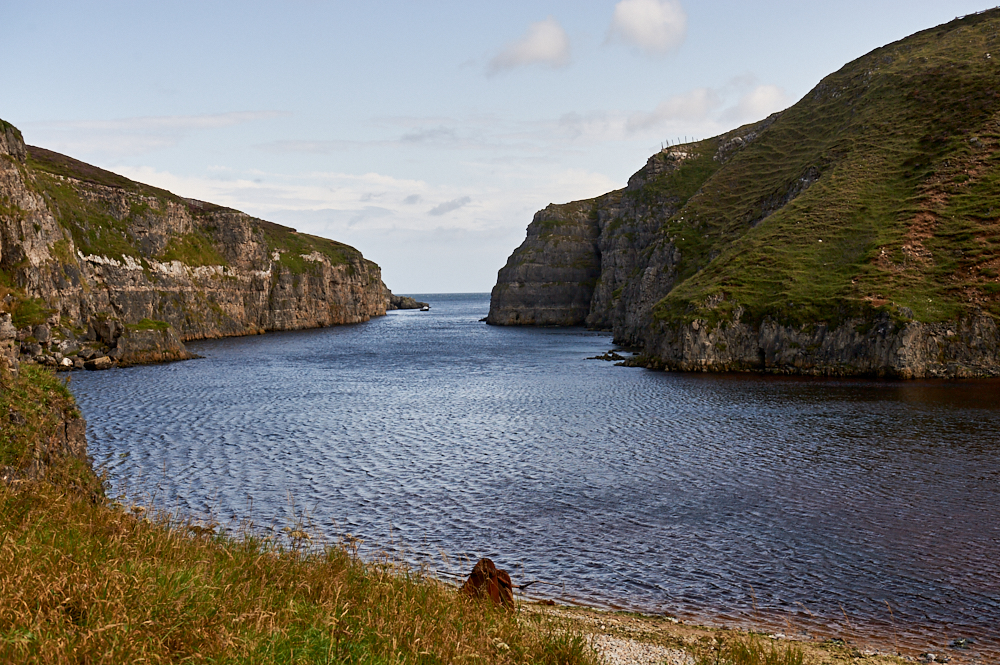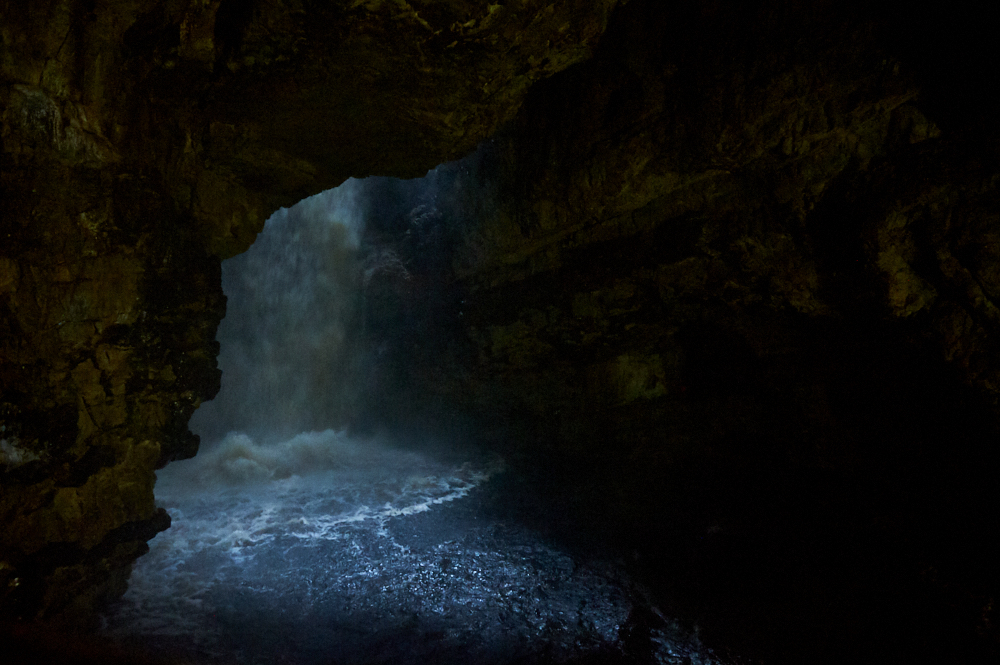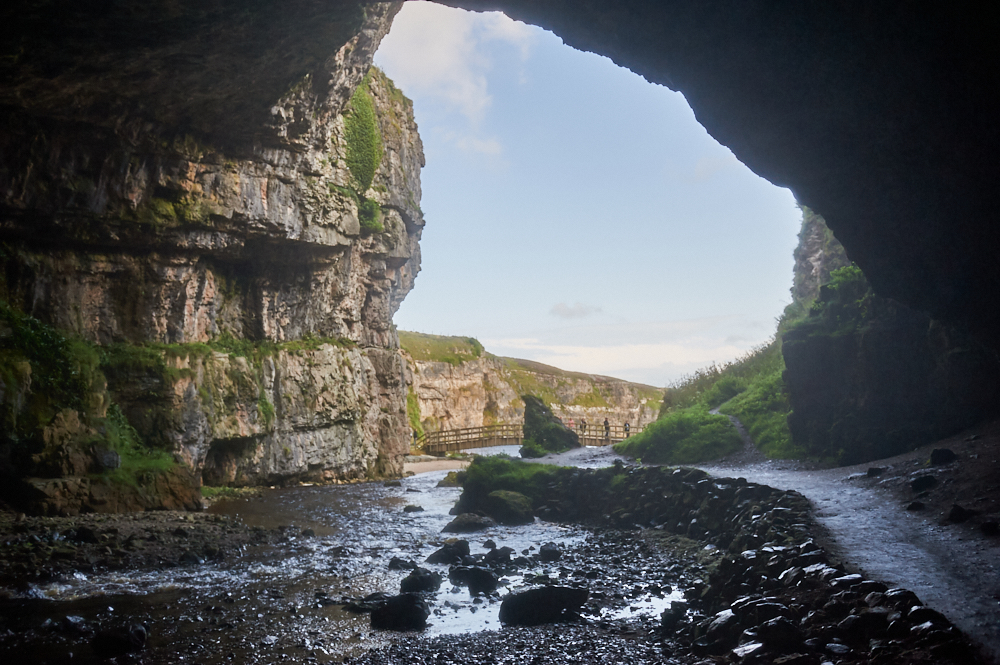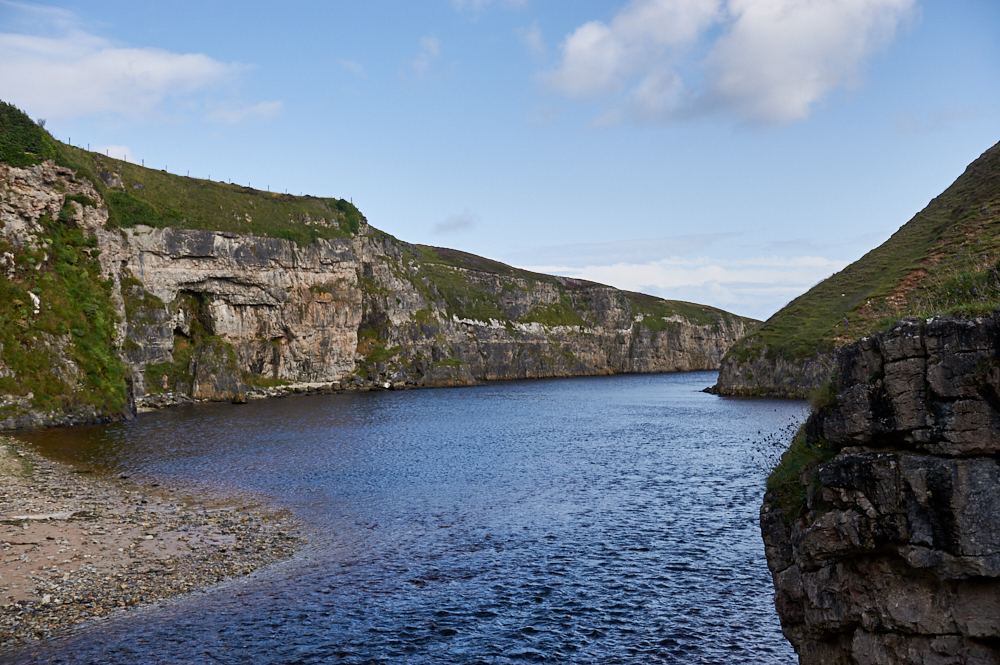
Next stop: Smoo Cave, large seawater and also a freshwater cave near Durness. Normally it is possible to walk into the cave and I think even take some kind of boat trips, but it was closed this day after the heavy rainfalls during the night.
The name “Smoo” comes from the Old Norse Smuga which means “hiding place” and it is not only the cave that´s hiding but also part of the village, the Allt Smoo, which disappears into a sinkhole on the inland side.

Traces have been found of a fishing and shipbuilding community living and working here during the Viking era, and it is easy to imagine that this was an ideal place for a community that wanted to stay undetected by anyone sailing by, in an age when far more travellers journeyed by sea than overland. The earliest evidence of occupation of the cave goes back much further, to around 5,000 years ago. (Undiscovered Scotland)
Smoo Cave became more known after Sir Walter Scott featured it in his cruise around northern Scotland in 1814.

Inside the first cavern which was made by the sea. The following caverns, which were closed, were made by freshwater, the river Allt Smoo.


Leave a Reply